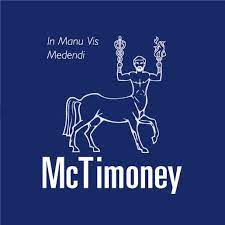
Massage Therapy
Combining chiropractic care with massage therapy is a common and complementary approach to address musculoskeletal issues. Chiropractic care focuses on the spine and nervous system, aiming to correct misalignments (subluxations) through adjustments. This can improve joint function and alleviate pain. Massage therapy targets muscles and soft tissues, releasing tension, reducing knots, and improving flexibility. It complements chiropractic adjustments by promoting muscle relaxation.
Together, they can offer a more comprehensive approach to address issues such as back pain, neck pain, and joint stiffness. Chiropractic adjustments may help realign the spine, while massage therapy can address associated muscle tension.
The goal of a massage is to promote physical and mental well-being through the manipulation of soft tissues in the body. Deep tissue massage is a type of massage therapy that focuses on targeting deeper layers of muscles and connective tissues. It’s used to address specific areas of tension, chronic pain, and muscle knots.
Here's what you should know about deep tissue massage:
Deep tissue massage involves applying firm pressure and slow strokes to reach deeper muscle layers. The therapist may use their fingers, hands, elbows, and even forearms to apply sustained pressure.
- Pain Relief: Deep tissue massage can help alleviate chronic pain, such as lower back pain, stiff neck, and sore shoulders.
- Muscle Tension: It’s effective at releasing muscle tension and knots by breaking up adhesions and scar tissue.
- Improved Mobility: By targeting deeper layers, deep tissue massage can enhance range of motion and flexibility.
- Posture Improvement: Massages can help correct posture issues caused by muscle imbalances.
- Injury Recovery: It’s often used as part of rehabilitation from injuries, helping to improve blood circulation and promote healing.
- Improved Circulation: The manipulation of tissues enhances blood flow, delivering more oxygen and nutrients to cells while aiding in the removal of waste products.
- Stress Reduction: While deep tissue massage is more focused and intense, it can still induce relaxation and a sense of well-being.
- Enhanced Immune Function: Some studies suggest that regular massage may positively impact the immune system.
- Mood Improvement: The relaxation induced by massage can have positive effects on mental well-being, reducing anxiety and promoting a sense of calm.
- Better Sleep: Regular massages may help improve sleep quality and duration.
Deep tissue massage may cause some discomfort or “good pain” as the therapist works on deeper layers. It’s important to communicate with your therapist about your comfort level, as they can adjust pressure accordingly.
After a deep tissue massage, you might experience some soreness or tenderness for a day or two. Drinking plenty of water can help flush out toxins released during the massage and minimise any discomfort. Ice and heat therapy will help with inflammation and heal and soothe sore muscles.
See why patients love 33chiro
Ellie Wallace2023-01-05As a Chiropractor myself I know the importance of having a healthy spine. I have been practicing for 15 years, and been treated by many many different Chiropractors in my time. Natalie is fantastic and I can honestly say since I've been under Natalie's care I have never felt this good. Highly recommend her. Thank you for taking care of me :)Susan marie Goddard2022-10-25Natalie is Amazing, i came to her after waking up in pain at night, my body hurting after having 5 children & even after the first session i was already in less pain. I have felt soo much better as time has gone on & actually notice if i don't go for a time.Michelle Phillips2022-10-23Cannot rate this Chiropractor enough! I visited to complain about neck pain as well as lower body stiffness. After only a period of 8 weeks my symptoms have already improved and my progress is going from strength to strength! In addition, Natalie is extremely personable and a fantastic listener. Empathetic and patient, for me she’s certainly the best back care find I’ve encountered in years.Paige Spiers2022-10-20Natalie is the best of the best at what she does. She has helped me massively with diagnosing my back issue, helping ease the pain in my back but she also helps me mentally with my anxiety and depression. She literally has magic hands! Thank you Natalie for not only being my chiropractor but also an amazing friend.Martin Redfern2022-10-08I have been seeing Natalie for about a year now , initially as person with very bad sciatica. I was recommended by my son. The initial consultation was very good and she talked through all of the problems that I was experiencing and put together a treatment plan which was 1 visit per week for 10 weeks . This helped tremendously and got the sciatica under control. After the 10 week course was finished it was recommended to attend once a month to keep the situation under control , and this has definitely been worth doing as I’ve not had a flare up since seeing Natalie. She is a very professional person as well as being a friendly person as well. I have also recommended my wife, brother and his Fiancé to her and they all attend her clinic regularly. I would have no hesitation in recommending Natalie to anyone who needs this sort of medical helpamel fitzpatrick2022-07-13Always look forward to seeing Natalie. She has helped cure my back and neck pain. Fantastic with children aswell. Highly recommend 33 chiro!Harry Palmer2022-02-22Natalie is super friendly and welcoming she has an in depth knowledge paired with the ability to explain in detail what, why and how which leaves you feeling reassured and in the knowledge that you’re in great hands. She set out a plan over time for me which was great to see as it gave me a lot of confidence that any issue my broken body could throw at her will be sorted, from minor issues to problems that steamed from a car accident I had… I would recommend her above anyone else I’ve come into contact with, can’t sing her praises enough. If your questioning “should I see her?” Go for it, you won’t look back 👍🏽Madeleine & Robert Hutchings2021-12-14Natalie has made such a positive difference throughout my pregnancy and working from home, I feel like my body is more aligned and relaxed after each visit. Natalie is easy to talk to, listens to any concerns and explains any questions I have - I can't recommend her enough! I will continue to see Natalie to the end of my pregnancy (and any future little ones) and well into the future! I feel so comfortable and confident in her care.Catherine Dodd2021-12-0833chiro is a wonderful clinic with such a great energy and Natalie is an amazing chiropractor. She always makes me feel at ease and the treatment I have received has made a huge difference to me during my postnatal and more recently antenatal journey. I would 100% recommend this clinic to anyone considering, or in need of chiropractic care.kimberley Bailey2021-12-03Natalie is a very understanding and empathetic chiropractor. She treats the whole body not just the issue that you first reported. You leave your appointments feeling so much better than when you arrive. I definitely recommend Chiro 33Google rating score: 5.0 of 5, based on 26 reviews


